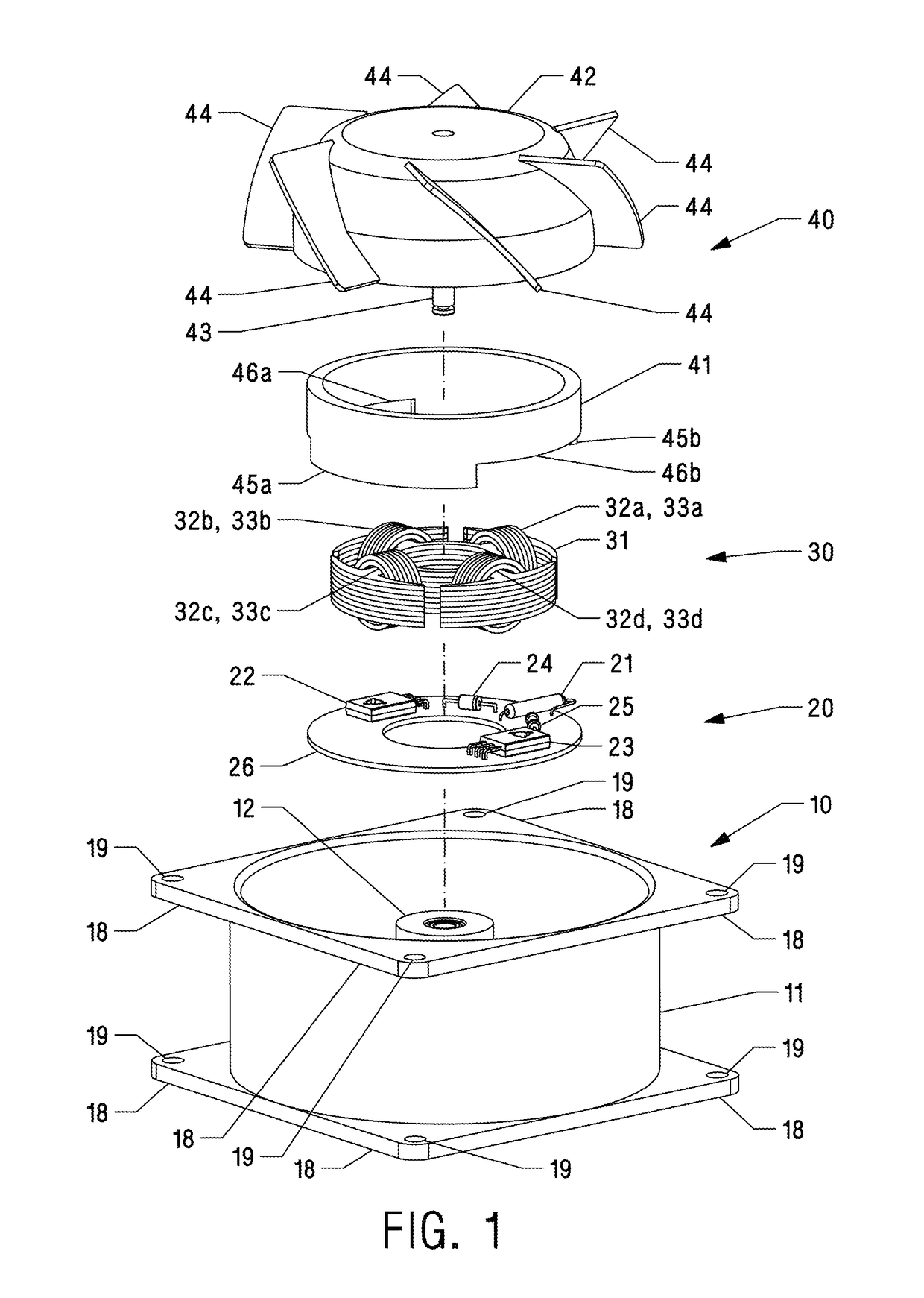Brushless DC motor incorporating single pole double throw magnetic switch
a brushless dc motor and switch technology, applied in the direction of dynamo-electric converter control, magnetic circuit rotating parts, magnetic circuit shape/form/construction, etc., can solve the problems of increasing the cost of these motors, reducing the total efficiency of such motors, and complicated manufacturing, and achieve simple construction and high efficiency.
- Summary
- Abstract
- Description
- Claims
- Application Information
AI Technical Summary
Benefits of technology
Problems solved by technology
Method used
Image
Examples
Embodiment Construction
[0020]One embodiment of the motor is illustrated in FIG. 1 (three-dimensional exploded view showing main components) and FIG. 2 (cross-sectional view taken along the axis of the motor shaft). The motor consists of a casing assembly 10, a stator 30, a permanent magnet rotor 40, and a printed circuit board (PCB) 20 containing electronic control components.
[0021]A casing 11 is generally adapted to a hollow cylindrical configuration having four extending corner flanges 18 with mounting holes 19 on inlet and outlet sides. It can be manufactured from die-cast aluminum or plastic but other suitable materials could be used. A housing 12 is secured to the casing 11 by means of screws 16 and 17. The stator 30 consists of a plurality of stacked laminations 31 forming four identical poles of a customary T-shape, that are essentially umbrella or mushroom shaped, each pole extending circumferentially over an extended arc or sector, covering almost an entire quarter of a circle with narrow gaps be...
PUM
 Login to View More
Login to View More Abstract
Description
Claims
Application Information
 Login to View More
Login to View More - R&D
- Intellectual Property
- Life Sciences
- Materials
- Tech Scout
- Unparalleled Data Quality
- Higher Quality Content
- 60% Fewer Hallucinations
Browse by: Latest US Patents, China's latest patents, Technical Efficacy Thesaurus, Application Domain, Technology Topic, Popular Technical Reports.
© 2025 PatSnap. All rights reserved.Legal|Privacy policy|Modern Slavery Act Transparency Statement|Sitemap|About US| Contact US: help@patsnap.com



